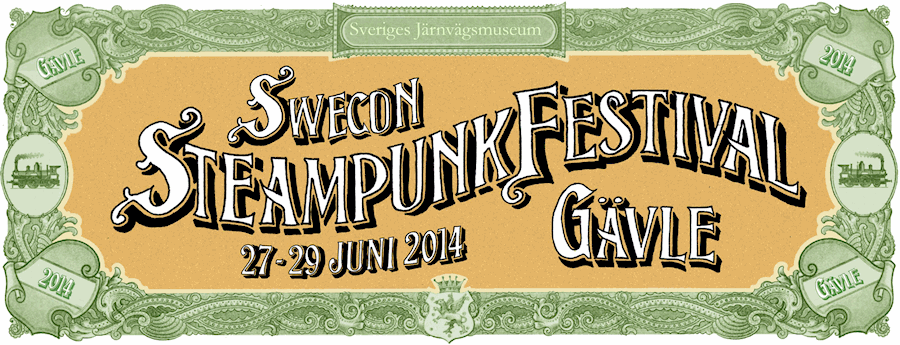The Steampunkfestival – which at the same time is this year’s Swecon – takes place from June 27th till 29th at the Swedish Railway Museum in Gävle. The festival starts at 5 pm on the 27th and ends at 5pm on the 29th. More information on membership, how to get there, and answers to hopefully all of your questions can you find here.
It is our goal to to make this festival a special, perhaps unique, opportunity to combine technology, history, DIY and handicraft culture, and fantasy’s possibilities to stretch the borders of what we are accustomed to. But first and foremost, we want it to be a meeting place for our shared passions and for such interests that might not overlap, but that can serve as a sounding board for each other.
Steampunk meets the museum’s resources
Monster hunters, airship pirates, discoverers, and mad inventors with corsets and bustles, and all of their fantastic creations in metal, wood, tissue, pictures and writing – all of them before a background of machines from the steam era. Which setting would be more suitable in order to highlight the aesthetics of steampunk? We hope to endow you with inspiration for new creations.
Railway Museum meets literature
The Steampunk Festival will be arranged by the Upsala-Gefle Steampunk Society in cooperation with the Swedish Railway Museum in Gävle. The giant steam engines are mostly silent, but the museum holds its tales from a time when railroads symbolized Future and Progress. But tales can also be found in literature, which contains depictions from both a time when steam was master of the world, and from a time which could have been if everything had been different. History and histories may cross-fertilise.
SF convention meets broader Steampunk culture
Science fiction conventions are meeting points for those who burn for fantasy, especially for those who read and write it themselves. We want to place fantastic literature in a festival that also celebrates many other creative forms of expression. An SF conventions about steampunk stands for both analysis and critique, and offers a space for imagination.
